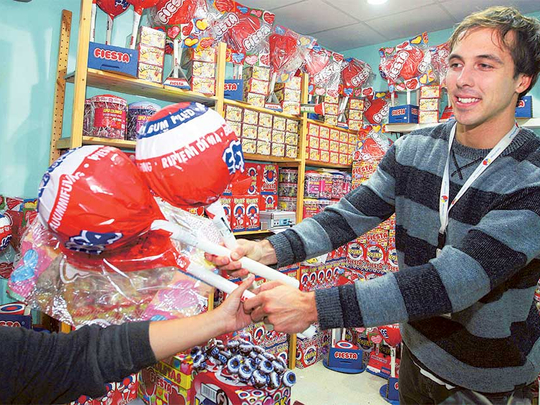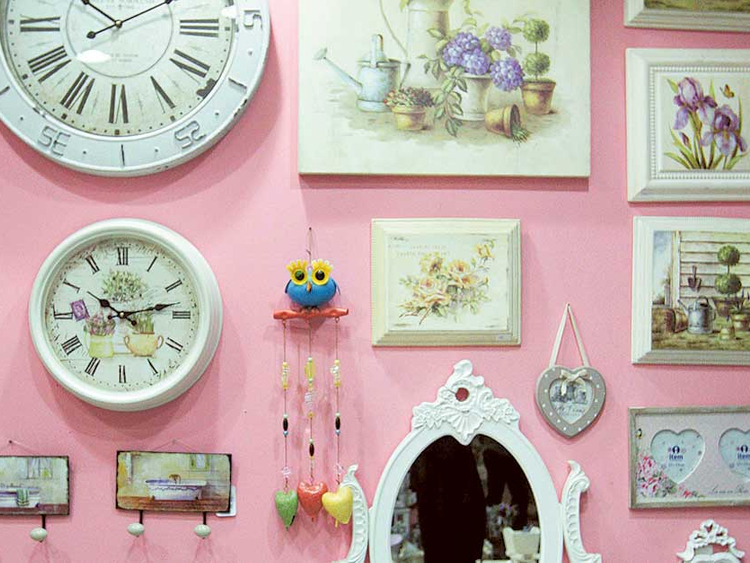
Dubai: If you want a taste of Spain and a bit of its culture without boarding a plane, then the Spain Pavilion at Global Village is your next best option here in Dubai.
Virtually all the stalls at the pavilion of this Mediterranean country have on offer authentic Spanish products, from clothing to music to food.
“We put in a lot of care in selecting the products so that there’s a little bit of everything from our country. We have a lot of Spanish food, gift items, and furniture,” says Raul Simon, organiser of the exhibition at the Spain pavilion. “We have Flamenco shows every day and Spanish music. We try to show a little bit of Spain to the people of Dubai and all the visitors and I think they like it.”
Their fourth edition at Global Village, this season’s pavilion mimics a small town in Castilla La Mancha, in central Spain.
The windmills on the pavilion’s façade pavilion are based on La Mancha’s world-renowned — yet fictional — son, Don Quixote. This famous character in Miguel Cervantes’ popular novel picked a fight with windmills imagining them to be wicked giants.
“This year is the 400th anniversary of the writing of the book, Don Quixote. We thought that it would be nice to remember that and we did the decoration based on the region where Quixote is thought to be from as the novel suggests,” Simon said.
The almost 800-square-metre pavilion features 35 exhibitors from Spain sectioned by tiny streets in a town fiesta or feast, complete with red and yellow farolillos, Spanish for paper lanterns.
If you enjoy Spanish food, you’ll find it at many stalls. But interesting items are at the right-hand side of the pavilion near the corner where Spanish bottled goods such as chicken broth, vegetable broth, all-in-one box paella, and halal beef for snacking are on offer.
You can also find specially made olive oil with gold leaf and saffron from the Spanish province of Tarragona in this stall.
“We’ve sold 32 bottles of olive oil with gold leaf and only have four left. This type of olive oil with gold inside is good for digestion,” says Emilio Serrano Perez, exhibitor at Glamourmet.
A 0.5-litre bottle of olive oil with gold leaf costs Dh220, while the one with saffron costs Dh130, and the regular olive oil costs Dh100.
Simon also brought Spain’s most popular confectionery brand, Fiesta, whose origins date back to the 1940s in Puerto Rico during the outbreak of the Second World War that affected the rationing of sugar. The lollipops come in different flavours and the giant ones called MegaKojak with 23 pieces inside cost Dh95.
“These are really old brands in Spain. These were the lollipops my grandmother grew up on and they’re still being enjoyed in Spain,” Diana, one of the exhibitors, said.
Just by the entrance is a shop selling souvenirs such as flamenco dancer figurines, brass replicas of charging bulls, matadors, and magnetic souvenirs. Shopkeeper Juliet says their flamenco dresses at this souvenir shop, which cost between Dh180 and Dh350, are popular among visitors from Saudi Arabia. But when they buy, the buy the whole set – shoes, hats, and fans included.
Spanish guitars and vintage home decorations in pastel colours such as decorative wall clocks, small cupboards, mirrors, sewing kits, and many more are on feature.
On the right-hand side of the pavilion, just by the entrance, are decorative swords with 24-carat yellow gold and 18-carat green gold, with prices varying from Dh500 to Dh5,400. The swords come from Toledo, a well-preserved medieval city in central Spain that is famous for its swords and sword shops.
The province, which carries more than 2,000 years of history, was said to have Arab city walls constructed in the 10th century to ward off attackers.
This Arabic feature of the province, Simon says, was due to the historical and cultural links that Spain has had with the Arab world for centuries.
“For 800 years, the Arabs coming from the Arabian peninsula went to Spain and stayed there. This is between the 7th century and the 15th century,” he said.
“If you go to the southern part of Spain, especially in Andalusia, you will still see many Arab influences in buildings, mosques, and palaces. You will see many Arab names on landmarks, rivers, and others. For 800 years, we lived together in Spain. From then, everything became possible.”
The Spain Pavilion is only one of the more than 70 countries in 31 pavilions at the Global Village, one of the main attractions of the Dubai Shopping Festival located at Dubailand.













